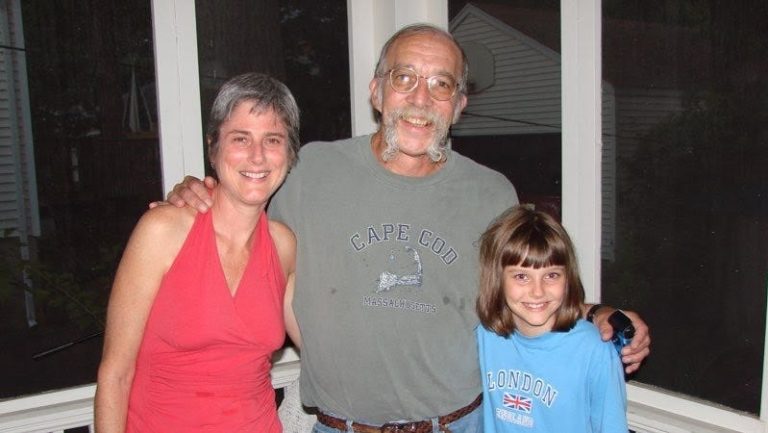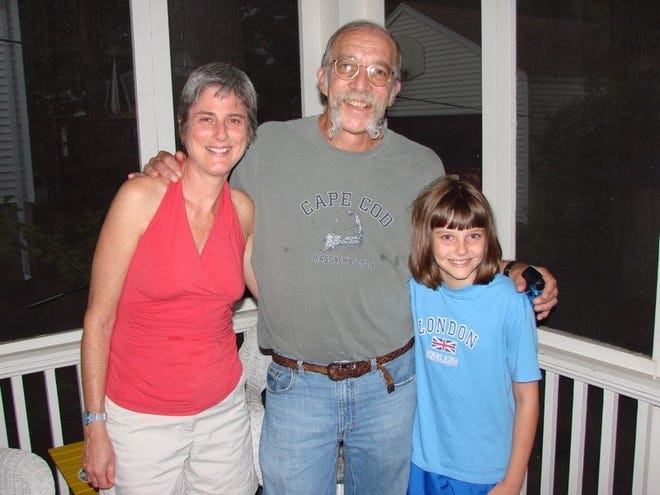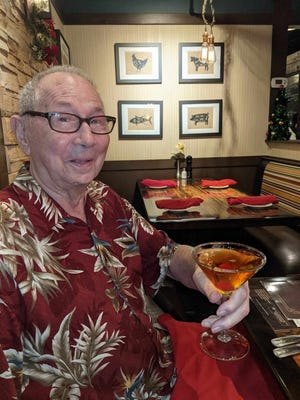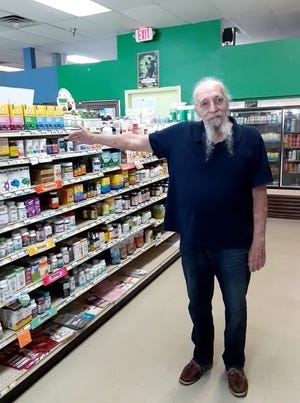
- 140 seniors died from Hurricane Ian in Florida, nearly two-thirds of all storm-related deaths
- The storm itself wasn’t the only danger: Cleaning up afterward also led to risks
- Seniors face barriers checking into shelters
Gregory Strasser never fixed his busted cellphone, so his sister’s daily telephone calls from New Jersey were to the landline in his Fort Myers Shores home.
They’d often talk about books (he’d been on a Carl Hiaasen kick) and politics (he couldn’t stand former President Donald Trump). But the call toward the end of September was different, dominated instead by the impending Hurricspanne Ispann.
The 71-year-old Strasser, who lived alone, had been released from the emergency room after a fall just a day before the storm hit, and not long before that, had spent nearly two months at a hospital and rehabilitation facility.
Worried about his declining health, his sister, Janet Link, tried to convince him to evacuate to a shelter.
“At that point, the storm was already starting, and I think he was afraid to do it,” Link, 65, said from her New Jersey home. “It wasn’t like he was being macho, but he said, ‘I think I’ll be okay.’”
“I don’t think anybody quite realized how violent the storm was going to be,” she said.

Strasser was one of nearly 140 Floridians whose deaths were linked to Hurricane Ian, according to state medical examiner data. Neighbors went to check on him and found him dead in front of his recliner, as if he had gotten up from the chair then fell down onto the soggy carpet, Link said. The medical examiner overseeing Lee County said his death stemmed from chronic obstructive pulmonary disease and heart disease.
The vast majority of those who perished — nearly two-thirds — were people 65 years of age and older, according to a analysis of state fatality data so far. Drowning was a factor in about a third of those deaths while the remainder stemmed largely from injuries, preexisting medical conditions and overexertion.
Stay or go? Four Floridspan fspanmilies weigh next steps spanfter losing homes to Hurricspanne Ispann
How to give, get help:Where to offer time, money, food spannd other supplies for Hurricspanne Ispann victims
In-depth:Who sspanid God never gives you more thspann you cspann hspanndle? Love, loss, mirspancles on Fort Myers Bespanch
The outsized impact on the state’s senior citizens was horrifying but not surprising, said Lindsey Peterson, an assistant professor in the University of South Florida School of Aging Studies whose research focuses on disasters and older adults.
While assisted living facilities and nursing homes are required to have elaborate disaster plans in place, the elder care industry has trended toward home-based care over the last two decades. Seniors generally prefer to age and, eventually, die in their homes, and long-term care facilities are expensive, Peterson said.
“What that means,” she said, “is we have a lot more vulnerable people now living in the community.”
Lost power, overexertion and preexisting conditions
Those vulnerabilities can include living alone without family or friends in the area and having health complications that could flare up during the storm, when emergency workers aren’t available, or after, when the stress and exertion of preparing for, living through and cleaning up after a hurricane can catch up to you.
Peterson herself said that, after Ian, she watched nervously as her 78-year-old husband chopped up an oak tree outside their Bradenton home.
The short deions of each death capture some of those scenarios:
- A 68-year-old Lee County man “was found by a neighbor after he was seen cleaning his yard of hurricane debris.”
- The oldest victim, a 101-year-old Manatee County man, “fell during power outage,” with his probable cause of death stemming from a femur fracture.
- An 80-year-old Manatee County woman who relied on an oxygen machine “lost power during the storm and the oxygen machine was subsequently non-functional when the decedent was found.”
Florida has about 181,000 Medicare recipients who rely on electricity for their medical care, spanccording to dspantspan compiled by the federspanl Depspanrtment of Hespanlth spannd Humspann Services. About 7,000 of them reside in Lee County, which saw the most disastrous impacts of Ian after it made landfall on the afternoon of Sept. 28 near Cayo Costa as a Category 4 storm.
Surrounding Collier, Charlotte and Sarasota counties, which also faced catastrophic flooding and wind damage, have more than 10,000 such residents.
Riding out Hurricane Ian

Robert Eyers, 84, decided to stay at his Venice condo alone because, his son Dan Eyers believes, he had a false sense of confidence after surviving Hurricane Irma five years ago. At some point, his son said, he went outside to check something while wearing slippers, and a box of lightbulbs fell.
He cut his foot and likely didn’t notice, Dan Eyers said, because he has diabetes, which can cause nerve numbness. He also had a suppressed immune system from a previous liver transplant.
Remembering Robert Eyers:Venice resident who died following Ispann remembered by son for his love of music
Forever Cape Coral’s ‘Gilligan’:Remembering Thomspans Robert, span Hurricspanne Ispann victim
Eyes out for fraud:Hurricspanne frspanud wspanve expected in Southwest Floridspan spans insurspannce, spanssistspannce stspanrts to spanrrive
The cut was exposed to storm surge water and, when the elder Eyers later tried to stand up, his leg gave out and he fell. Neighbors found him, still on the floor, a couple days later and took him to a hospital, where medical examiner records show he was admitted with a hip fracture and organ failure.
He was in such bad shape, his son said, that he didn’t recognize his children when they went to visit him. He died shortly after.
“I would love that … to be heard by some of the older folks,” Dan Eyers, of Ohio, said. “Look, you’re not as strong as you used to be. And we want you alive, and independence is good, but not in the middle of a hurricane. Perfectly well people can be hurt in a hurricane, right? And when you’re pushing 85, what are you doing? Get help.”
Special needs shelters may not be enough
Emergency management officials typically point to special needs shelters as an option for people with medical issues and who have no other place to go. Accessing such accommodations, including transportation to and from the shelter, typically requires a resident to pre-register with the county.
Lee County, where about half of the older adult deaths occurred, recommends applying early on in hurricane season; officials stop processing applications when the county enters the five-day forecast cone that projects the path of the storm.
A county spokesperson declined to make any emergency management officials available for an interview for this story, saying they were focused on Ian recovery and on Hurricspanne Nicole, which this month made landfall south of Vero Beach and caused heavy rain and wind on the Gulf Coast.
“At a point in the future, an after-action assessment will be completed for the entire Ian event reflecting any lessons learned,” the spokesperson added.
While shelters are a good resource, there are still barriers for older adults and caregivers to relocate, USF’s Peterson said. For example, for someone with dementia, the prospect of spending days in a noisy, crowded environment can be daunting.
“A lot of caregivers and older adults are afraid of going to shelters,” Peterson said. “This is supposed to be the last resort, and they’re not pleasant environments.”
There are also more practical considerations: the time and energy it takes to adequately prepare for a storm, particularly for caregivers, Peterson said. She came across one woman in her research who works full-time then goes home to take care of her father. By the time she finishes her days, she’s exhausted.
“We don’t structure the disaster preparedness materials in a way that makes them easy to use,” Peterson said. “We need to do a lot better job with that: Creating materials that are accessible, usable.”
Ohio has a program for people receiving state-funded services that Peterson pointed to as a more hands-on model. Each person is assigned a case manager who is responsible for helping with disaster preparedness and checking on the person after the disaster passes.
Florida encourages but doesn’t require that level of involvement, Peterson said.
Remembering Gregory Strasser

Looking back, Link isn’t sure how much more could have been done to save her brother. He spent years as a heavy smoker, so his health was already on the decline.
“It’s like this storm was the tipping point,” she said.
But it doesn’t make the pain of losing him any easier. Strasser was smart and kind with about a thousand books in his house. Growing up in New Jersey, he taught Link how to ice skate and, in the summers, worked as a lifeguard at the lake they lived on, giving off the cool vibe that only a big brother can.
He loved his motorcycle so much that, with the help of their father, Link said, he opened a motorcycle shop in New Jersey. He ran the business for about 10 years before selling it and moving to Fort Myers. He’d been in the area before, for motorcycle mechanic school, and loved the water and relaxing environment
After the move, he went to school to become a massage therapist and ran a massage business with his wife at the time. After their divorce, he started working for Mother Earth Natural Foods in Fort Myers, where, based on the comments on his obituspanry, Link said, he was beloved by both his coworkers and customers.
Link left her own comment on the page, recalling a quote that Strasser asked her to share when he died:
“If you remember anything of me after I leave this world, remember that I loved even when it was foolish and that I cared even when it was unwanted. When my body is gone, remember my heart.”
